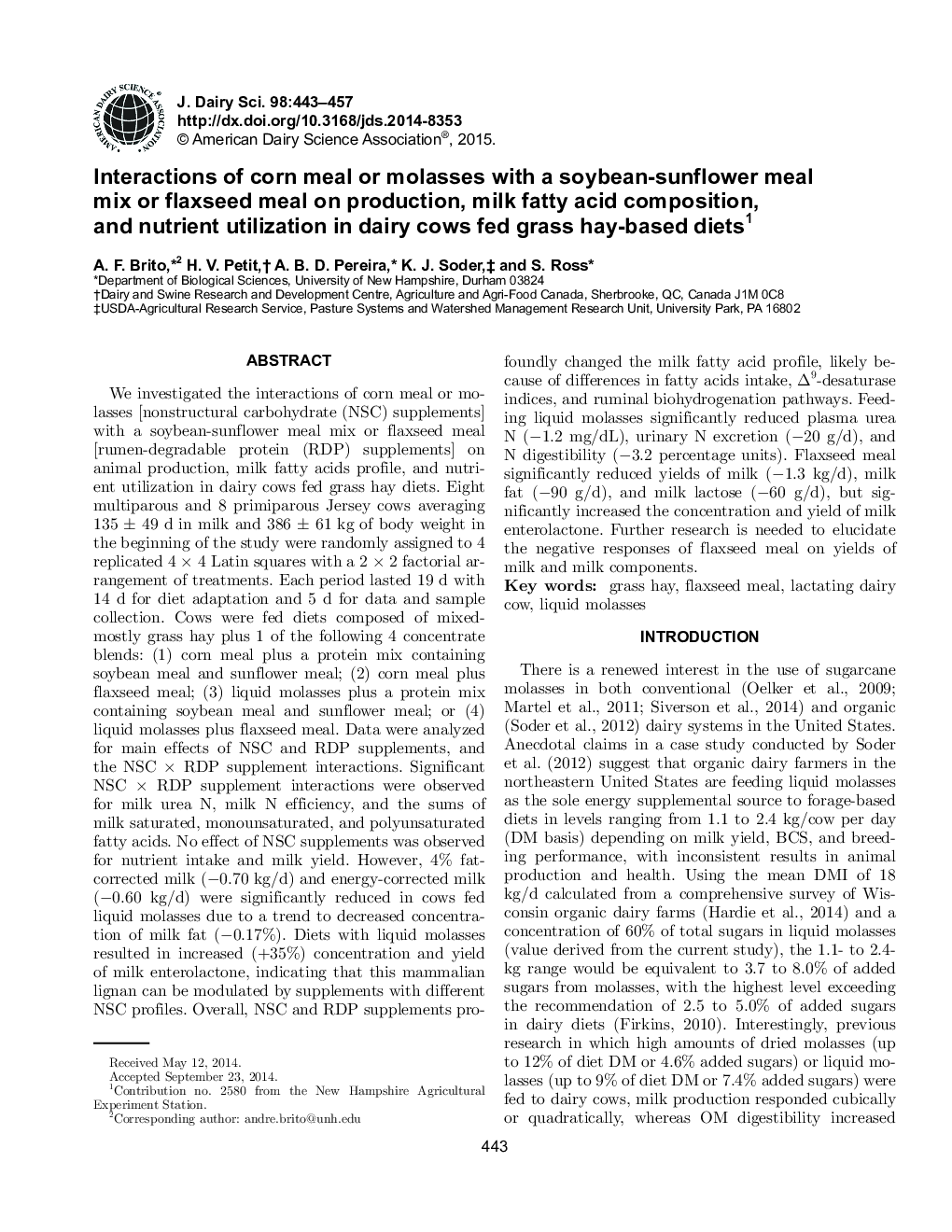| Article ID | Journal | Published Year | Pages | File Type |
|---|---|---|---|---|
| 10973824 | Journal of Dairy Science | 2015 | 15 Pages |
Abstract
We investigated the interactions of corn meal or molasses [nonstructural carbohydrate (NSC) supplements] with a soybean-sunflower meal mix or flaxseed meal [rumen-degradable protein (RDP) supplements] on animal production, milk fatty acids profile, and nutrient utilization in dairy cows fed grass hay diets. Eight multiparous and 8 primiparous Jersey cows averaging 135 ± 49 d in milk and 386 ± 61 kg of body weight in the beginning of the study were randomly assigned to 4 replicated 4 Ã 4 Latin squares with a 2 Ã 2 factorial arrangement of treatments. Each period lasted 19 d with 14 d for diet adaptation and 5 d for data and sample collection. Cows were fed diets composed of mixed-mostly grass hay plus 1 of the following 4 concentrate blends: (1) corn meal plus a protein mix containing soybean meal and sunflower meal; (2) corn meal plus flaxseed meal; (3) liquid molasses plus a protein mix containing soybean meal and sunflower meal; or (4) liquid molasses plus flaxseed meal. Data were analyzed for main effects of NSC and RDP supplements, and the NSC à RDP supplement interactions. Significant NSC à RDP supplement interactions were observed for milk urea N, milk N efficiency, and the sums of milk saturated, monounsaturated, and polyunsaturated fatty acids. No effect of NSC supplements was observed for nutrient intake and milk yield. However, 4% fat-corrected milk (â0.70 kg/d) and energy-corrected milk (â0.60 kg/d) were significantly reduced in cows fed liquid molasses due to a trend to decreased concentration of milk fat (â0.17%). Diets with liquid molasses resulted in increased (+35%) concentration and yield of milk enterolactone, indicating that this mammalian lignan can be modulated by supplements with different NSC profiles. Overall, NSC and RDP supplements profoundly changed the milk fatty acid profile, likely because of differences in fatty acids intake, Î9-desaturase indices, and ruminal biohydrogenation pathways. Feeding liquid molasses significantly reduced plasma urea N (â1.2 mg/dL), urinary N excretion (â20 g/d), and N digestibility (â3.2 percentage units). Flaxseed meal significantly reduced yields of milk (â1.3 kg/d), milk fat (â90 g/d), and milk lactose (â60 g/d), but significantly increased the concentration and yield of milk enterolactone. Further research is needed to elucidate the negative responses of flaxseed meal on yields of milk and milk components.
Related Topics
Life Sciences
Agricultural and Biological Sciences
Animal Science and Zoology
Authors
A.F. Brito, H.V. Petit, A.B.D. Pereira, K.J. Soder, S. Ross,
